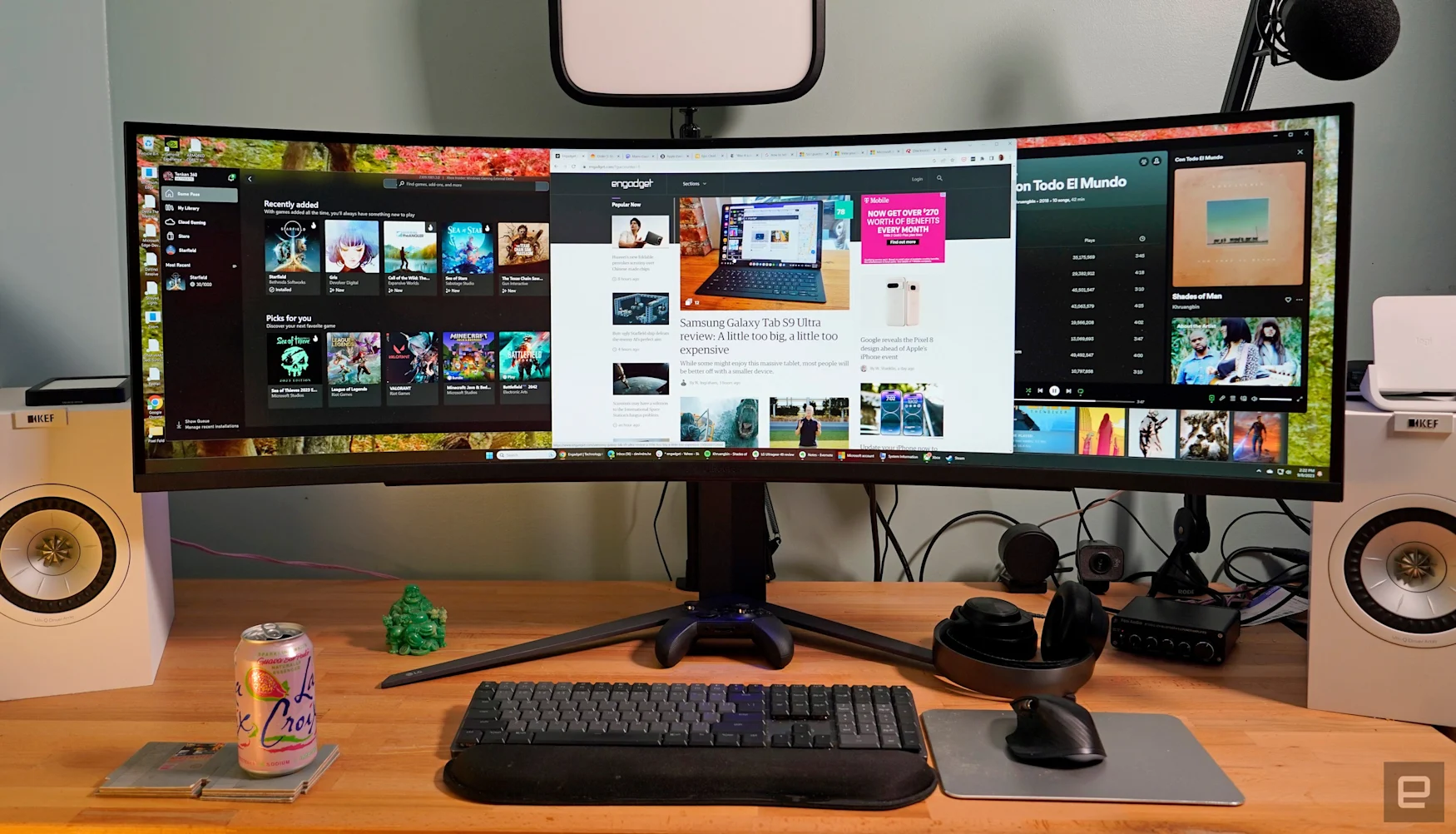When I saw one of the first 49-inch ultrawide monitors from Samsung five years ago, I found it to be a curious creation. I was no stranger to the world of ultrawides, but that screen was a bit much. It was too unwieldy, and its odd resolution wasn’t tall enough for my tastes. Since then, though, the 49-inch category has evolved: They’re cheaper, have newer display technology and are better equipped for gaming. Sure, you’ll still need to have a lot of room on your desk (or a very sturdy mounting arm), but these days they could actually be considered practical.
LG’s 49-inch Curved UltraGear is a prime example of how much things have changed. Starting at $1,300, it offers 49-inches of glorious screen space with a sharp 5,120 by 1,440 resolution; an ultra-fast 240Hz refresh rate and 1ms response time; and AMD FreeSync Premium support. It’s LG’s largest and most immersive gaming monitor yet. And after spending several weeks with the UltraGear 49, it has finally made me a convert of for the 49-inch ultrawide life.
LG
LG 49-inch Curved UltraGear
Engadget
86
Critics – Not yet scored
N/A
Users – Not yet scored
N/A
Pros
Bright and sharp ultrawide display
240Hz refresh rate
1ms response time
HDR support
Cons
Not all games support its full resolution
Requires a significant amount of desk space
Of course, one does not simply decide to buy the 49-inch UltraGear. You need to have the space to fit its bulky frame, which measures 46-inches across. You need to make sure all of your accessories can still fit on your desk (it’s particularly annoying if you regularly use cameras and large microphones). And, last but not least, you also need to ensure the games you play the most can take full advantage of the UltraGear’s wide 32:9 aspect ratio.
That any game can run at 5,120 by 1,440 pixels is a testament to just how far the ultrawide monitor movement has grown over the last decade. A typical widescreen TV has a 16:9 aspect ratio with a 1,920 by 1080 (1080p), 2,560 by 1,440 (1,440p) or 4K resolution. Ultrawide displays stretch those proportions a bit with a 21:9 aspect ratio, typically running at either 2,560 by 1080, or 3,440 by 1,440 pixels. These days, it’s rare to find a new PC title that doesn’t support those ultrawide resolutions. And when they don’t, as in the case of Elden Ring, developers often argue it’s done to avoid giving ultrawide players any advantage. (Of course, as is often the case with PC gaming, modders will find a way.)

Photo by Devindra Hardawar/Engadget
Official support for extreme ultrawides like the 49-inch UltraGear is more rare, but it’s not unheard of. I was able to play several hours of Halo Infinite, Cyberpunk 2077, No Man’s Sky, Armored Core VI and the recently released FPS Sprawl at the LG’s full 5,120 by 1,440 resolution. You’ll still need the GPU horsepower to actually get decent framerates, of course, but the UltraGear’s native resolution is still less demanding than 4K. (For the record, I tested the UltraGear 49 on my personal PC equipped with a Ryzen 8700K and an NVIDIA RTX 4090 Ti.)
Starfield (below) was the first new game to spoil my extreme ultrawide fun. It supports 3,440 by 1,440 , but it can’t stretch out to 32:9 resolutions. That meant I spent my first 10 hours of the game with black bars on the sides of the screen. It was still playable, but I think anyone who buys a monitor this size will be disappointed with the restrictions. You could easily hack Starfield to support wider resolutions, but there’s no guarantee those solutions will work forever.